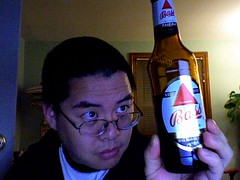Marketing Sucks
Marketing sucks. That’s the perception that many, many consumers have about marketing, for good or ill. Here’s an example of what I mean. Richard Mondello, a high school senior in Dover Plains, New York, recently wrote on his blog:
In my opinion, marketers will always be marketers. It’s their job to manipulate you into purchasing their product or service, and this isn’t arguable.
This is depressing, mostly because Richard’s right. Decades of bad behavior, bad marketing, bad advertising, and general shortsightedness on the part of corporate marketing departments have blackened the profession’s name to the very people we want to reach.
At every opportunity for new means of communicating, bad actors work as fast as possible to piss in the pool in the hopes that they’ll be able to scrape up a few meager commissions or sales before being consigned to the bin of perpetual ignorage by consumers in that channel.
Don’t believe me? Here’s one of my favorite examples – Twitter is 18 months old and has tons of clueless marketers trying to garner attention every hour of every day. Not a single day goes by when I don’t get a follower notification from some asshat marketer whose Twitterstream is only pimpage.
How did it all go wrong? Short term thinking, short term vision. When companies, organizations, or individuals focus only on the short term, whether it’s quarterly results on the Street or whether you can get some action at the single’s bar tonight, the same desperation is created by short term thinking. That combined with a profit above all else mentality has turned marketing into the corporate equivalent of that guy in the bar who smells of equal parts aggression, fear, and desperation – and the target audience stays far, far away.
Marketing can be more than this. Marketing can be more than desperate selling or attention whoring. Marketing can be, at its ideal, the sharing of ideas, the promotion of ideas. One of my favorite quotes from Seth Godin is that marketing can kill people. Bad marketing has basically been responsible for things like genocide in Darfur or the war in Iraq because the ideas that would have led to the most favorable outcome were not marketed as well as the ideas that have led to current outcomes.
So how do we get from desperate, lonely attention whoring (buy my product! digg my article! watch my video! pay attention to me!) to the ideal McMarketing outcome – billions and billions of lives saved? It really comes down to a change in our perception of what marketing is. Look at what the American Marketing Association says marketing is:
Marketing is an organizational function and a set of processes for creating, communicating and delivering value to customers and for managing customer relationships in ways that benefit the organization and its stakeholders.
Quick, close your eyes and try to remember that. I’d say marketing has a branding issue, wouldn’t you?
Try this:
Marketing is the sharing of ideas.
The idea that college is affordable with the right solutions.
The idea that a conference can be more than wooden panels and hotel food.
The idea that a marketing podcast can inform and entertain.
The idea that you can change your life for the better in an instant.
We need to change our own belief system about marketing from corporate pimpage to the sharing of ideas, of knowledge, of insight. If you have a product or service that is unremarkable, that is not worth sharing, either change your product or create something on top of the product that is worth sharing. That’s been the basic idea behind the Financial Aid Podcast. Student loans – especially federal student loans – are commodity products. They’re fundamentally more or less the exact same thing, give or take a few minor details. So how do you make a commodity interesting? I couldn’t.
But what I could do was create something else that was interesting – an internet radio show and new media initiative that changed how I thought about financial aid, and in turn helped others to change their ideas about financial aid. Instead of being a boring, obscure process that happened behind closed doors and in back room deals at conferences and golf courses, the Financial Aid Podcast has helped to bring at least part of the financial aid process out into the open, into the digital dialogue. It’s about sharing the ideas I’ve learned in financial aid with everyone and anyone who wants to listen and have a conversation about financial aid.
Are my ideas any good? That’s for the audience to judge, but based on the results so far – thousands of listeners, thousands of friends on Twitter, LinkedIn, and other networks, coverage in US News & World Report, The New York Times, The Wall Street Journal, WCVB Boston 5 – I’d say that they’re at least worth talking about to some degree.
If you’re a marketer, the very best thing you can do is to start figuring out what ideas you have that are worth sharing. Not products, not services, not pimpage, but actual ideas. If you work at a company that, frankly, has no ideas worth sharing, you either have to create them, or work for a different company.
What are your ideas worth sharing?
Did you enjoy this blog post? If so, please subscribe right now!



Get this and other great articles from the source at www.ChristopherSPenn.com





